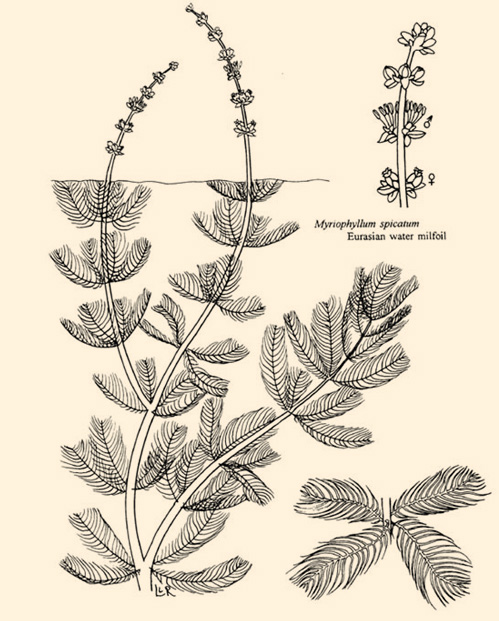
-
Products
Products
-
Services
Services
-
Identify Weeds
Identify Weeds
- Fountains and Aeration
- FAQ
- Contact Us
Eurasian Watermilfoil (Myriophyllum spicatum) is an exotic species most likely introduced in the United Sates by the aquarium industry. EWM grows densely and creates a canopy of vegetation that blocks out sunlight suppressing our native plants. EWM can grow to nuisance levels in lake areas previously devoid of such problematic growth compounding its impact.
